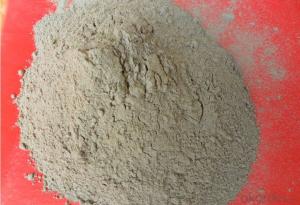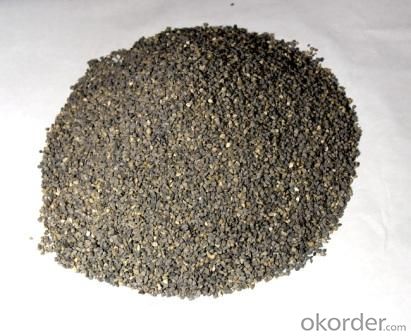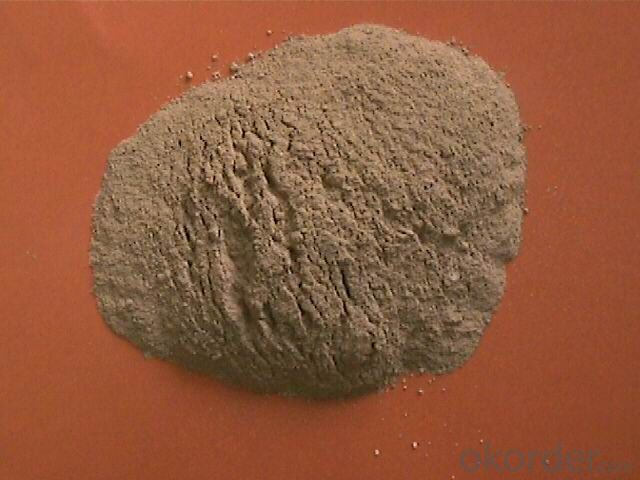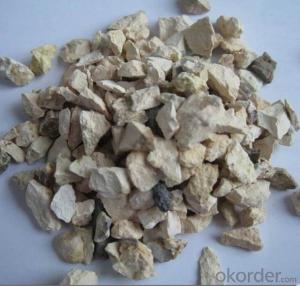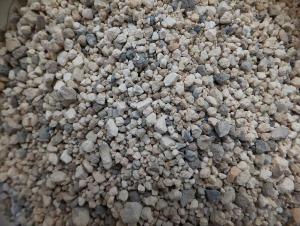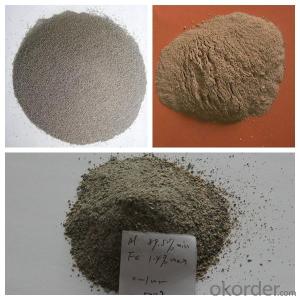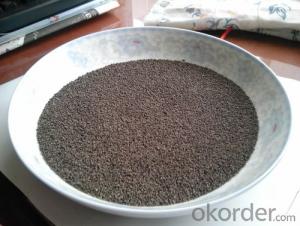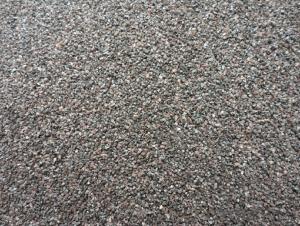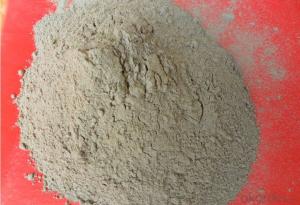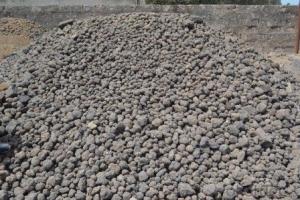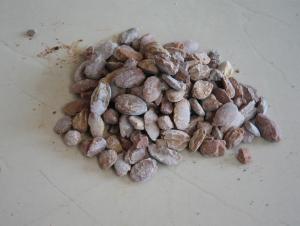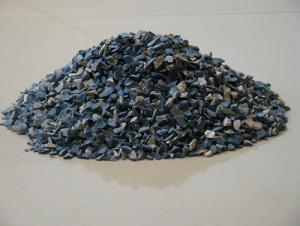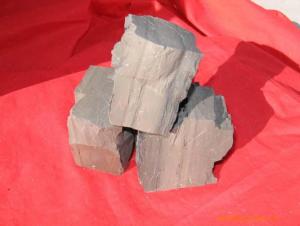Raw Materials for Refractory:Factory Direct 85% Al2O3 1-3mm Calcined Bauxite with Low Price
- Loading Port:
- China main port
- Payment Terms:
- TT OR LC
- Min Order Qty:
- 0 m.t.
- Supply Capability:
- 25000 m.t./month
OKorder Service Pledge
OKorder Financial Service
You Might Also Like
Calcined Bauxite:
bauxite, alumina or bauxite miner , main ingredients are aluminum oxide, hydrate alumina containing impurities,
is an earthy mineral.White or grey, brown yellow or light red by iron.From 4 to 3.9 g/cm3 density, hardness, 1 ~ 3, opaque, very brittle.
Very difficult to melt.Insoluble in water, soluble in sulfuric acid, sodium hydroxide solution.Mainly used for aluminium, refractory material.
Product use:
1. aluminium industry.
2 . precision casting.
3. for refractory products.
4. aluminum silicate refractory fiber.
5. with magnesia and bauxite clinker as raw material, add appropriate binder, used for pouring ladle whole ladle lining has particularly good effects.
6. manufacture alumina cement, abrasive materials, ceramic industry and chemical industry of aluminum compounds
Chemicals :
| Al2O3% | CaO % | Fe2O3% | refractoriness | bulk density |
| >88 | <0.4< span=""> | <1.5< span=""> | >1790 | >3.15 |
| >85 | <0.6< span=""> | <1.8< span=""> | >1790 | >3.10 |
| >80 | <0.8< span=""> | <2.0< span=""> | >1790 | >3.0 |
| 70-80 | <0.8< span=""> | <3.0< span=""> | >1790 | >2.8 |
| 60-70 | <0.8< span=""> | <3.0< span=""> | >1790 | >2.65 |
| 50-60 | <0.8< span=""> | <3.0< span=""> | >1770 | >2.45 |
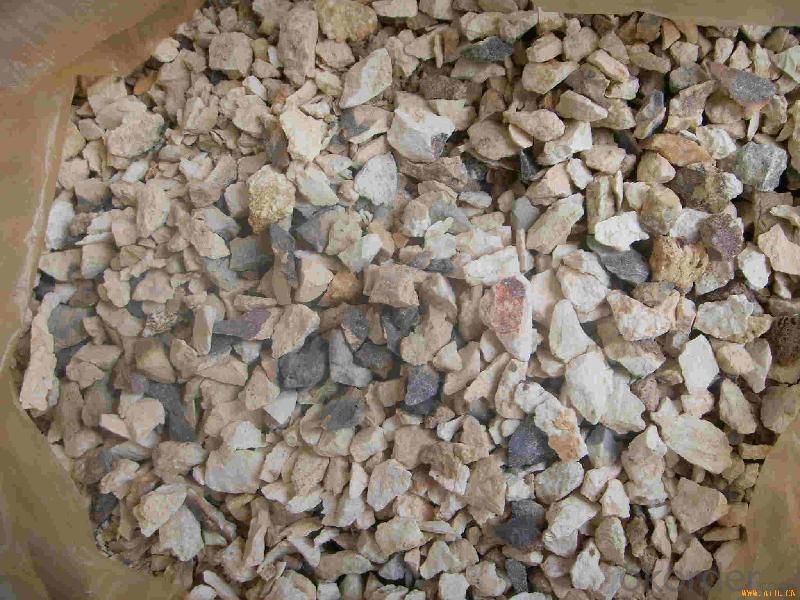
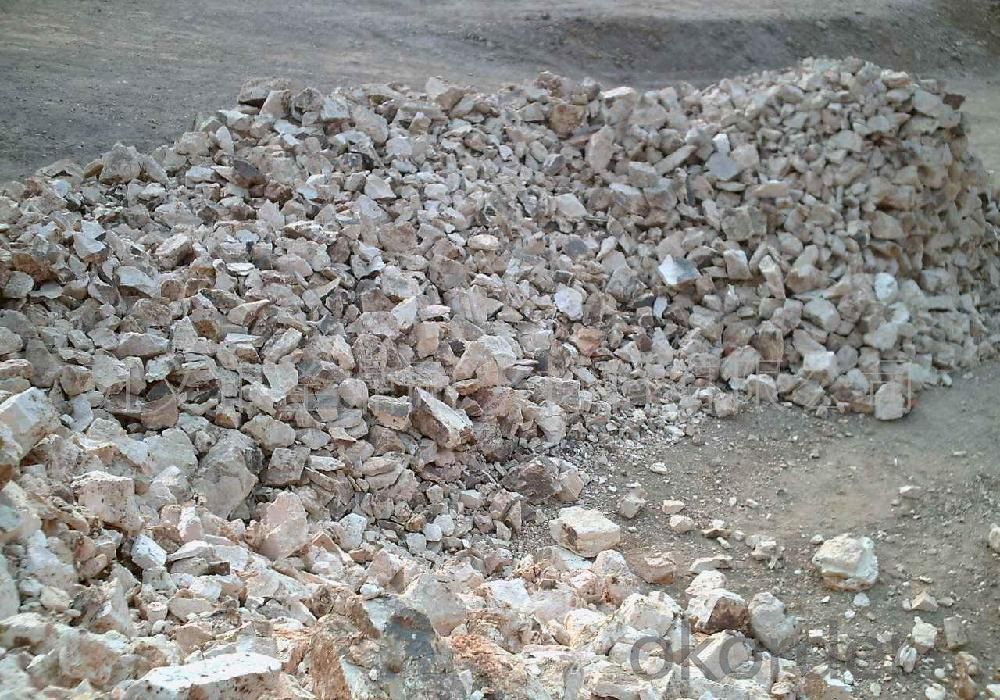
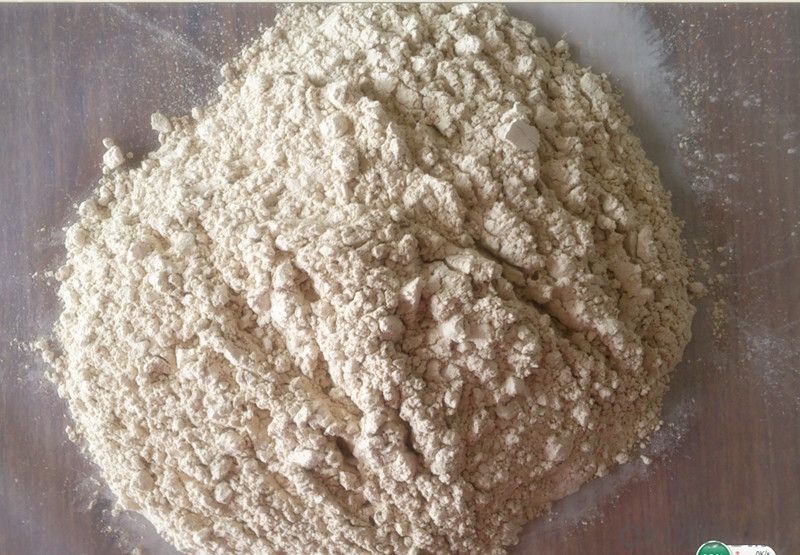
Our Service:
1. Your inquiry related to our products or prices will be replied in 24hours.
2. Manufacturer with large capacity, ensure the fast production cycle after confirmed the order.
- Q: How many kinds of fireproof materials are there in the market?
- A-level materials are the best which will not burn while the B-level materials are made of combustible materials which can burst into flames.
- Q: Refractory material, refractory brick
- Refractory materials of various varieties, different uses, it is necessary to scientifically classify refractory materials, so as to facilitate scientific research, rational selection and management. There are many classification methods for refractory materials, among which chemical properties classification method, chemical mineral classification method, production technology classification method, material form classification method and so on are included.
- Q: Are the specification of fireclay bricks and ordinary clay brick the same?
- The standard size of refractory bricks in our country is: 230mm × 114mm × 65mm; ordinary brick: 240 ×115 ×53, building blocks: (it is divided into blind hole and via) 240×390×190, 240×190×190, 240×90×190, 190×190×190, 190×390×190, 190×190×190, 190×90×190, 140×390×190, 140×190×190, 990×200×400, 0×390×190, 90×190×190, 90×90×190. Another is interlocked hollow block : 90×200×400,90×200×245,90×200×200,90×200×100,90×200×290,150×200×275,150×200×200,150×200×100,150×200×290.
- Q: What is the difference in the nature between the refractory material and thermal?insulation?material
- thermal?insulation?material is a material which has a strong impedance to the heat flow. the nature of the material requires that the material can isolate the delivery of thermal, and the low heat conductivity coefficient and expansion coefficient of the non-metal material.refractory is good in heat resisitance and chamical erosion but not high temperature resistance. Requirements on nature is still in high temperature.
- Q: how about the performance of aluminum silicate fire proof thermal insulation?
- aluminum silicate fire proof thermal insulation board has a good performance. it is a artificial board that separates the wood and plant fiber by mechanical and chemical methods and mixed the adhesion agent and water-proofing?agent, molding by high temperature and high press. the density of fiber. tha above information is coming from the Internet and it is just for reference.
- Q: What does the function of SiC for refractories?
- Silicon carbide for machine non-metallic materials with high temperature wear characteristics of silicon nitride bonded silicon carbide ceramic cups and other products in a blast furnace ladle brick aluminum silicon carbide as an antioxidant added MgO-C
- Q: what's the classification of fireproof materials?
- Fireproof materials are used in construction, in various forms and it has played an absolute role in modern fireproofing, common fireproofing materials include fireproof?panel, fire door, fireproofing glass, fire?retardant?coating, fireproof bag,etc Or the material itself has a high temperature resistance, heat-resistant, flame-retardant properties. Most of them are used for the construction industry.
- Q: What refractories are used in various parts of the blast furnace.
- Blast furnace from top to bottom has the throat, hearth staves, waist, bosh, hearth and furnace bottom. the specific structure is as follows: The throat is the first to be affected by the impact and abrasion, generally use high-density alumina bricks. the upper and central portion of temperature furnace is only 400 ~ 800 ℃, the area with high alumina bricks and silicate bricks. The lower part of furnace is subject to erosion and dust erosion alkali metal vapor due to high temperatures, it is required in such case to use high quality clay brick,high alumina brick,carborundum brick,corundum brick that is slag resistance and alkali?resistance, temperature resustant and wearproof. Furnace bosh temperature reached 1400 ~ 1600 ℃, serverly eroded by slag,vapor, flush. so we use carborundum brick and reaction-bonded silicon?carbide?brick. Bosh temperature reaching1600 ~ 1650 ℃, using alumina brick, corundum brick or silicon carbide brick. the temperature of Hearth near the upper portion of the outlet zone at 1700 ~ 2000 ℃, use of silicate bricks and corundum castable graphite filler, silicon carbide bricks. In 1450 Silly twitch bottom temperature sealing die of hunger slander bet phoenix astringent preserved Grade ~ 1500 ℃, use of graphite bricks and microporous carbon bricks, now use more corundum brick, corundum mullite brick and synthetic mullite brick. x26lt;P class x3d "share-btn"x26gt;
- Q: What's the difference of fire-resistant material's density, specific gravity and bulk specific gravity?
- It usually used to test lightweight refractory. Density can be divided into apparent density (usually called as density) and true density: apparent density includes blow hole inside the sample; Unit weight is using quality to divide volume of sample and specific weight is used to represent liquid.
- Q: Who knows about the types of Dalian thermal insulating and refractory materials?
- There are many Dalian thermal insulation materials, which can be divided into organic and inorganic thermal insulation materials. Materials include inorganic thermal insulation materials, polyfoam, mineral wool products, foam glass, expanded perlite insulation products, gelatine powder EPS grain heat insulating slurry, sprayed mineral wool, thermal insulation product of foam cements, and vacuum thermal insulation board.
Send your message to us
Raw Materials for Refractory:Factory Direct 85% Al2O3 1-3mm Calcined Bauxite with Low Price
- Loading Port:
- China main port
- Payment Terms:
- TT OR LC
- Min Order Qty:
- 0 m.t.
- Supply Capability:
- 25000 m.t./month
OKorder Service Pledge
OKorder Financial Service
Similar products
Hot products
Hot Searches
Related keywords
